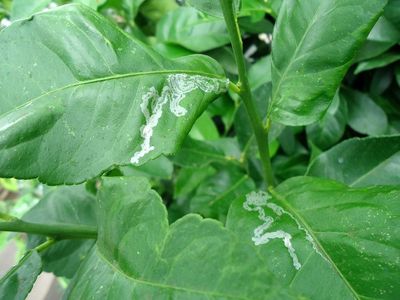About Citrella Leaf Miners
Citrus leaf miners, also called citrella leaf miners, are not destructive in their adult stage. They are very small moths, so minute that they are rarely even noticed. They have silvery white scales on their wings and a black spot on each wingtip. The female leaf miner moths lay their eggs one by one on the underside of citrus leaves. Grapefruit, lemon and lime trees are the most frequent hosts, but all citrus plants can be infested. Tiny larvae develop and mine tunnels into the leaves. Pupation takes between six and 22 days and happens within the leaf margin. Many generations are born each year. In Florida, a new generation is produced every three weeks.
Citrus Leaf Miner Damage
As with all leaf miners, larval mines are the most obvious signs of citrus leaf miners in your fruit trees. These are the winding holes eaten inside the leaves by the larvae of citrella leaf miners. Only young, flushing foliage is infested. The mines of citrus leaf miners are filled with frass, unlike those of other citrus pests. Other signs of their presence include curling leaves and rolled leaf edges where pupation occurs. If you notice the signs of citrus leaf miners in your orchard, you may be worried about the damage that the pests will do. However, citrus leaf miner damage is not very significant in a home orchard. Remember that the larvae of citrella leaf miners do not attack or damage the citrus fruit, but only the leaves. That may mean that you have to make the effort to protect young trees, since their development can be affected by the infestation, but your crop may not be damaged.
Citrus Leaf Miner Control
Managing citrus leaf miners is more a concern of commercial orchards than those with one or two lemon trees in the backyard. In Florida orchards, growers rely on both biological control and horticultural oil applications. Most citrus leaf miner control occurs via the insect’s natural enemies. These include parasitic wasps and spiders that kill up to 90 percent of larvae and pupae. One wasp is the parasitoid Ageniaspis citricola that accomplishes about a third of the control work itself. It is also responsible for managing citrus leaf miners in Hawaii as well.
